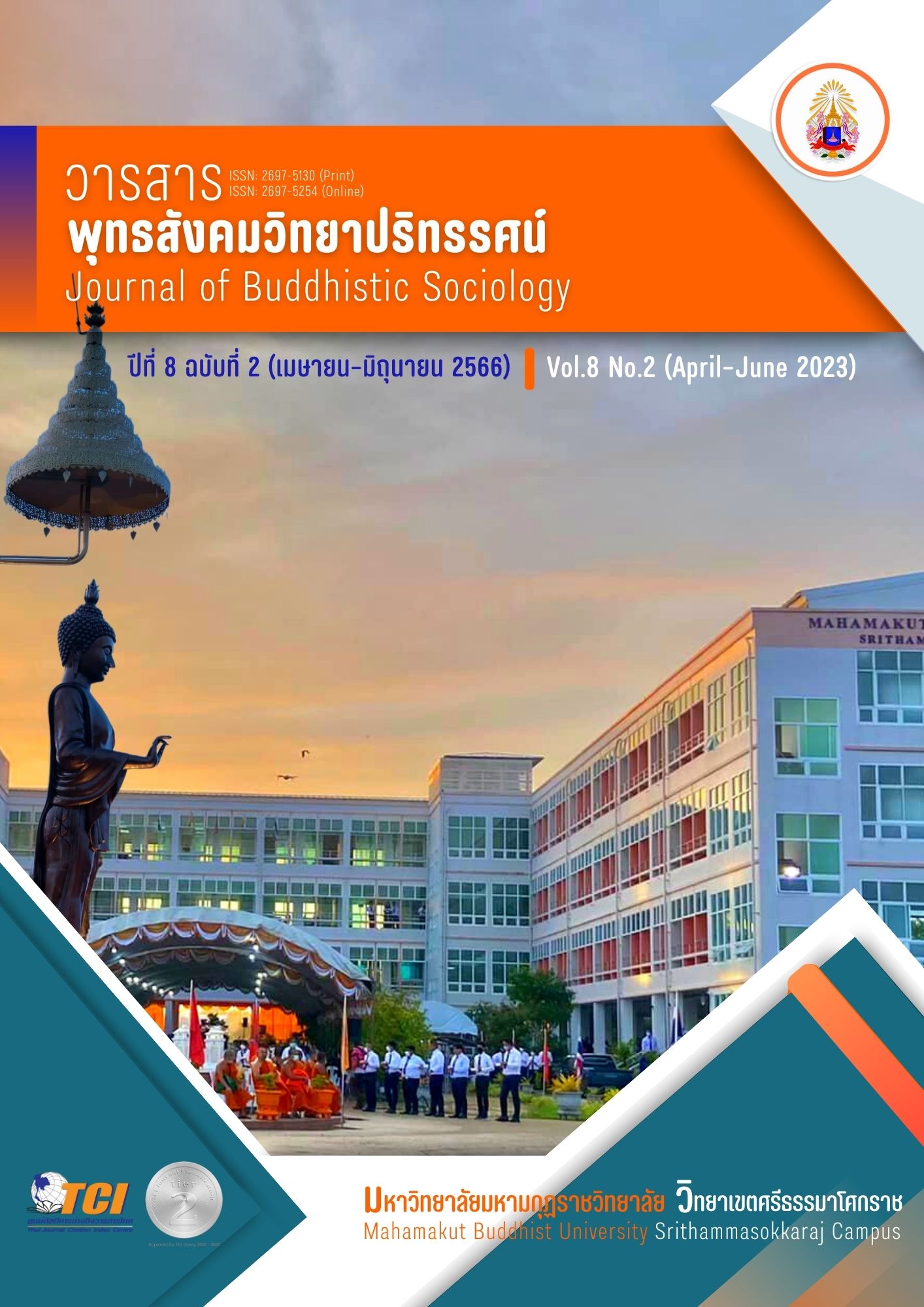GUIDELINES FOR IDENTIFICATION DEVELOPMENT ON BENJAVITI FOR ENHANCE CHARACTERS OF STUDENTS OF KANCHANAPHISEKWITTAYALAI SCHOOLS, KRABI
Main Article Content
Abstract
The study aimed to 1) study conditions of identity to enhance learner characteristics, 2) study the guidelines for developing identity under the Benjaviti principle to enhance learner characteristics, and 3) present guidelines for identity development under the Benjaviti principle to enhance learner characteristics. The study employed a qualitative research method. Data were collected through in-depth interviews with 15 informants, in-depth interviews with five experts, and a focus group discussion with seven experts. The research tools were interviews and a focus group discussion.
The findings revealed that;
1. For the conditions of identity, Kanchanapisek Wittayalai School, Krabi, operated to enhance student characteristics as follows: 1) Planning – there was an operation plan, but the school staff lacked understanding of the Benjaviti principle’s characteristic framework, 2) Identity implementation - the procedures in method, process, and implementation were unclear, 3) Supervision, monitoring, and evaluation - there was supervision, monitoring, and evaluation under the participatory way in a flexible manner. However, the process and procedures were unclear. The school also lacked tools and plans for practical measurement and evaluation, and 4) Identity improvement, correction, and maintenance – the school applied role model methods through teachers, staff, and student leaders, including using public relations to spread knowledge to students.
2. Guidelines for developing school identity under the Benjaviti principles comprised four steps: 1) Planning, 2) Identity implementation, 3) Supervision, monitoring, and evaluation, and 4) Identity improvement, correction, and maintenance.
3. Presentation results of guidelines for developing school identity by the experts revealed that the guidelines were feasible, appropriate, and beneficial. The guidelines also interconnected between processes and had a clear and practical framework relevant to the monitoring and evaluation process.
Article Details

This work is licensed under a Creative Commons Attribution-NonCommercial-NoDerivatives 4.0 International License.
References
กระทรวงศึกษาธิการ. (2542). พระราชบัญญัติการศึกษาแห่งชาติ พ.ศ. 2542 (ฉบับที่ 2) และแก้ไขเพิ่มเติม พ.ศ. 2545. กรุงเทพมหานคร: สยามสปอร์ต ซินดิเคท.
______. (2551). หลักสูตรแกนกลางการศึกษาขั้นพื้นฐาน พุทธศักราช 2551. กรุงเทพมหานคร: โรงพิมพ์ ชุมนุมสหกรณ์การเกษตรแห่งประเทศไทยจำกัด.
กระทรวงศึกษาธิการ. (2560). แผนการศึกษาแห่งชาติ พ.ศ. 2560-2579. กรุงเทพมหานคร: สำนักงานเลขาธิการสภาการศึกษา.
กลุ่มโรงเรียนกาญจนาภิเษกวิทยาลัย. (ม.ป.ป.). คู่มือการพัฒนาคุณลักษณะสุภาพบุรุษ – สุภาพสตรีตามแนวทางเบญจวิถี กลุ่มโรงเรียนกาญจนาภิเษกวิทยาลัย. กลุ่มโรงเรียนกาญจนาภิเษกวิทยาลัย.
ทิพย์สุดา สมนา. (2560). แนวทางการพัฒนาอัตลักษณ์ของสถานศึกษาขั้นพื้นฐาน เขตพื้นที่การศึกษา ประถมศึกษาเชียงใหม่ เขต 1. ใน วิทยานิพนธ์ศึกษาศาสตรมหาบัณฑิต สาขาวิชาการบริหารการศึกษา. มหาวิทยาลัยเชียงใหม่.
เมทินี รำพึงสุข. (2557). แนวทางดำเนินงานในการพัฒนาอัตลักษณ์ของนักเรียน: กรณีศึกษาโรงเรียนปฏิบัติดี. ใน วิทยานิพนธ์ครุศาสตรมหาบัณฑิต สาขาวิธีวิทยาการวิจัยการศึกษา. จุฬาลงกรณ์มหาวิทยาลัย.
ษุรพีฐ์ บุญคง. (2557). แนวทางการสร้างอัตลักษณ์ของโรงเรียนวิทยาศาสตร์จากการมีส่วนร่วมของผู้เกี่ยวข้อง. ใน วิทยานิพนธ์ครุศาสตร์มหาบัณฑิต สาขาวิชาพัฒนศึกษา. จุฬาลงกรณ์มหาวิทยาลัย.
Qashmer & Amani Faisal. (2016). "Character Education and Adolescents" Moral Identity Development (Actual and Ideal). In Ph.D. dissertation. University of Missouri St.


